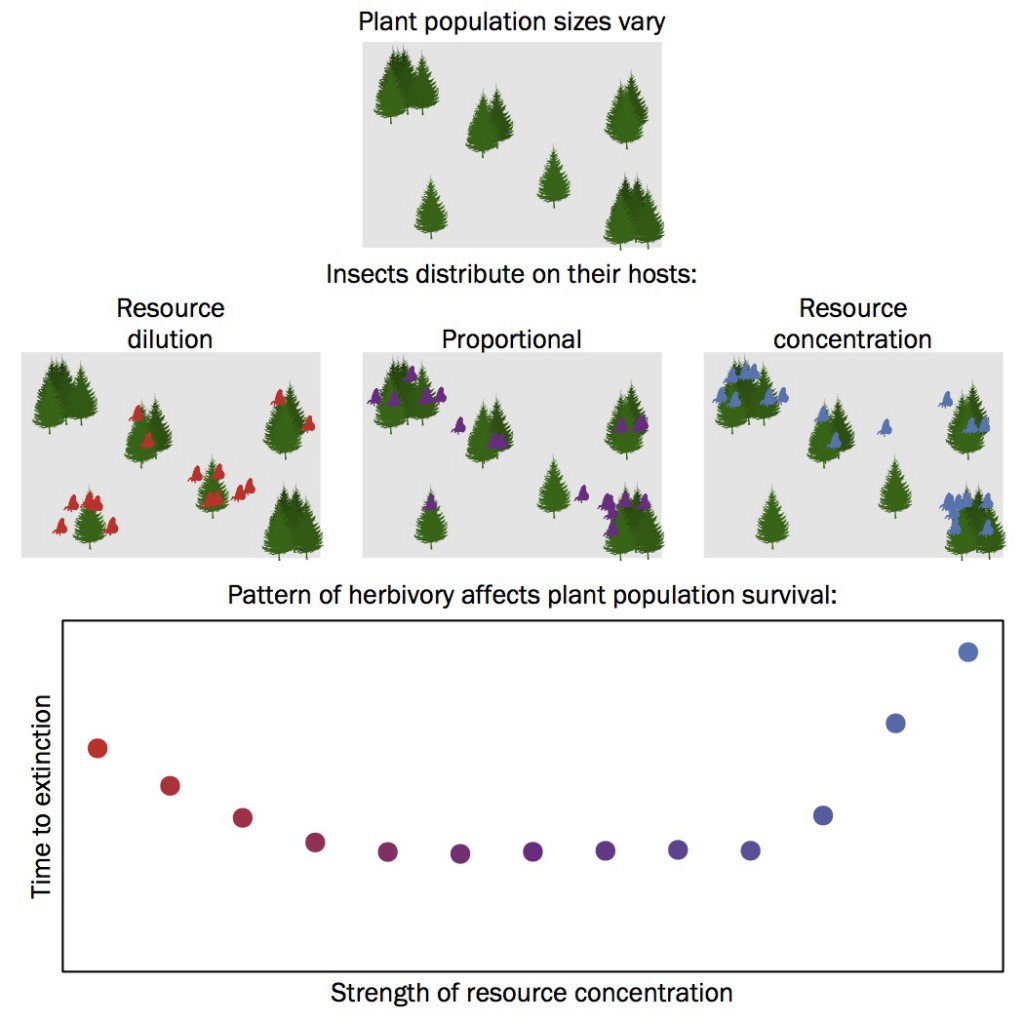Stephens, AEA & JH Myers, 2012. Resource concentration by insects and implications for plant populations. Journal of Ecology. doi: 10.1111/j.1365-2745.2012.01971.x. Link
Abstract
- The distribution of herbivores among plant patches may be an important factor determining plant population persistence. The Resource Concentration Hypothesis proposes that herbivores are more abundant per unit plant at higher host plant densities and this has been found to occur in many systems. However, the opposite pattern, resource dilution, in which the herbivores are more abundant in low density patches and situations in which the number of insect herbivores per unit plant remains constant, also occurs.
- We developed a simulation model to explore how the distribution of insects per plant affects plant population decline and persistence. We varied the numbers of plants per patch and the distribution pattern, i.e. whether insects were found in a Resource Concentration distribution, a Resource Dilution distribution or a distribution in which insect abundance increased linearly with plant density.
- Resource concentration resulted in longer persistence of plant populations. Plant populations declined more rapidly with either weak resource dilution or directly proportional insect distribution patterns. As the intensity of resource concentration increased, the decline in plant population density was reduced and plant persistence increased due to increasing variance in insect load. Under strong resource dilution, increasing variance in the insect load had also lead to a reduction in plant population decline and an increase in plant persistence.
- We complement our model with field data from the diffuse knapweed, Centaurea diffusa biocontrol system. We compared the relationship with plant density of a successful biocontrol agent, Larinus minutus, and an unsuccessful one, Urophora affinis. Larinus minutus density was directly proportional to plant density while U. affinis showed a resource concentration pattern with higher rates of attack in high-density patches.
- Synthesis: Patterns of insect distribution with host plant density will alter the extent to which patches of differing plant densities decline or persist. Resource concentration promotes persistence of the insect–plant system because increased herbivore pressure in high-density patches leads to negative density-dependent plant growth. Weak resource dilution and a distribution of insects that is directly proportionate to plant density can accelerate plant population decline. Strong resource dilution leads to positive density dependence with higher population growth in large patches. Our simulation model and field data demonstrate that the relationship between insect distribution and plant densities can influence plant population dynamics, and has implications for choices of weed biological control agents.
Thanks to Rich for help with the design of the graphical abstract

